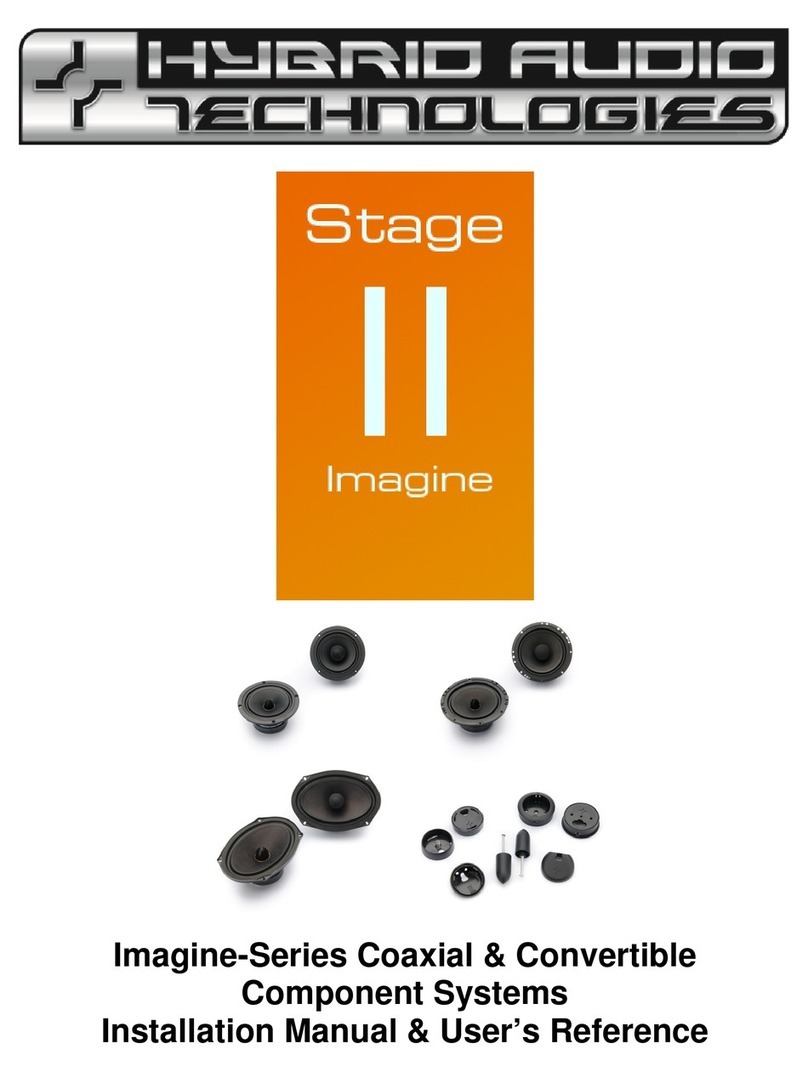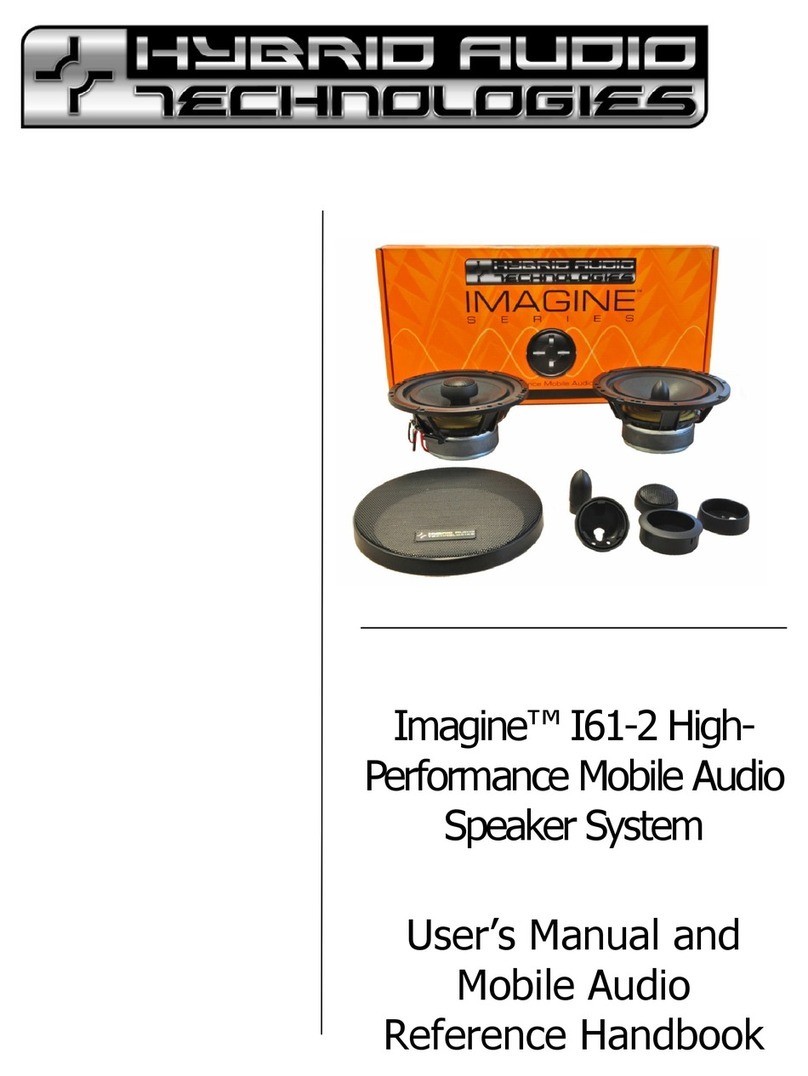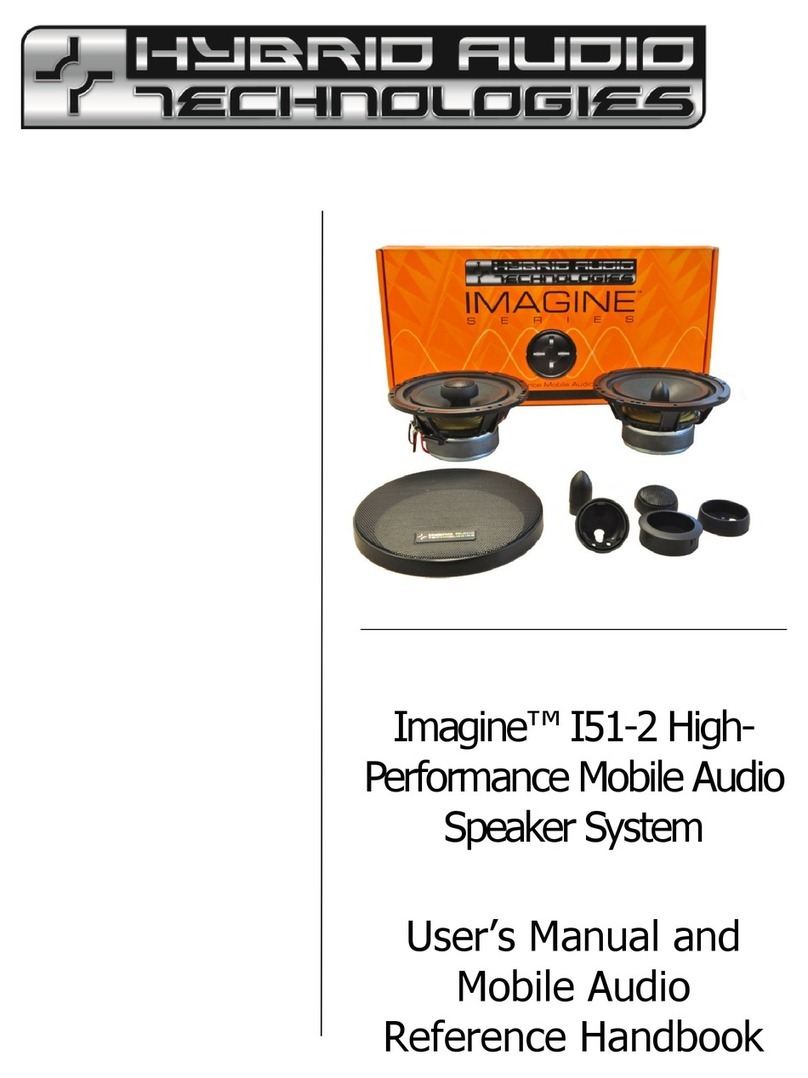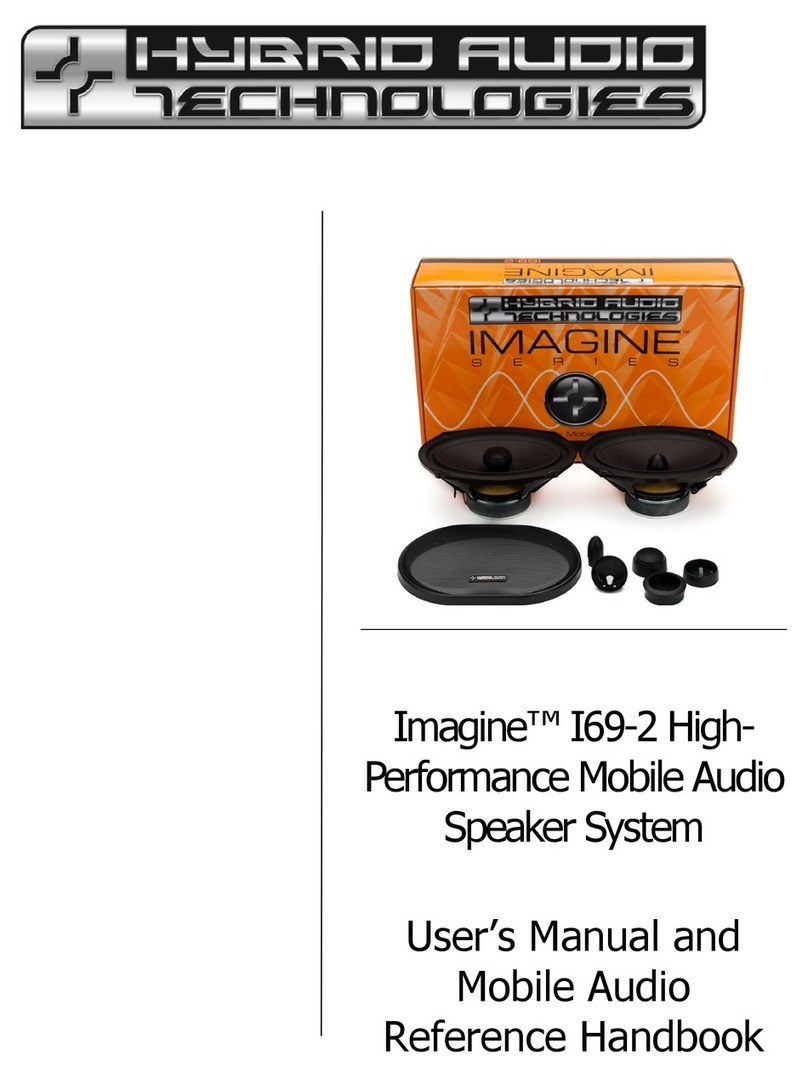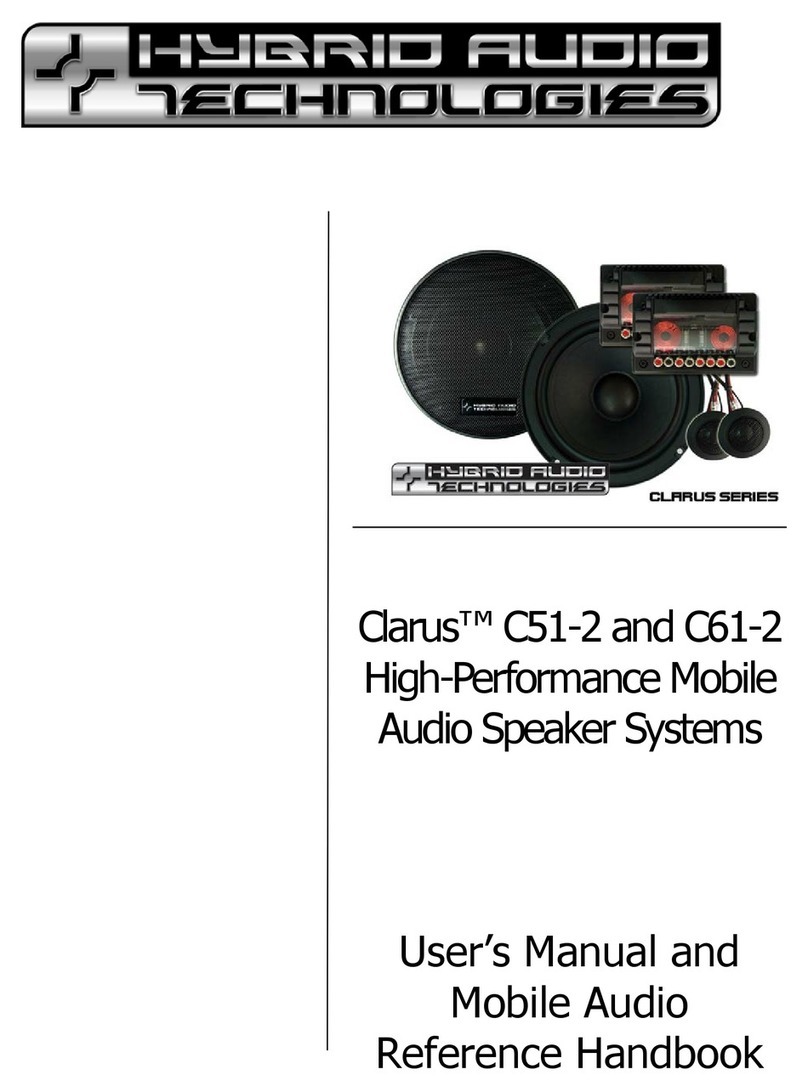Your Unity system
contains speaker drivers
and passive crossover
networks that were
developed and assembled
with a signicant
eort in research and
development, materials
science engineering,
an exhaustive level of
sampling and prototyping,
real-world testing, and
obsessive attention to
detail. The specications
and parameters of your
Unity component system is
detailed on these pages.
Attributes
Unity U3 Midrange,
U5, U6, and U69 Midbass
Frame
Cast ABS plastic. The basket is a high-quality cast
ABS design, which plays a critical role in aligning the
voice coil in the magnetic circuit. Additionally, the
cast ABS frame allows for better clamping strength
verses typical stamped steel frames, and ensures
that the voice coil remains centered in the former.
The midrange frame (Unity U3) is a proprietarily-
tooled design owned by Hybrid Audio Technologies,
has no OEM industry equivalent, and shares
common mounting hole diameter and similar
mounting depths to the Legatia and Legatia SE
three-inch midranges for potential/future upgrade
potential. The midbass frame (Unity U5, Unity U6,
and Unity U69) is a shared technology with the
Imagine series coaxial and convertible component
sets, and allow for immediate upgrade potential
due to identical size footprint, mounting depth, bolt
circle diameter, and motor diameter as the Imagine
convertible coaxial systems.
Cone and Dust Cap
Pressed paper with water proof treatment. It is
widely acknowledged that pressed paper cones
are the best marriage of lightness, stiness, and
ability of the cone to damp unwanted cone and
edge modes and resonances (read: distortion). The
paper cone, known for its excellent sonic attributes,
is water proof, thanks to a polymer developed
exclusive and proprietarily by Hybrid Audio
Technologies. The treatment does not change the
look and parameters of the driver like old-fashioned
“glossy” polymers which added an appreciable
amount of moving mass and signicantly colored
the sound. No, the Unity cones look like any
“normal”paper cone, but in reality are likely the
only high-performance water proof paper cone
car audio speaker systems on the market. The
treatment protects the cone from periodic drips
(such as inside a door panel), as well as accidental
splashes to the front of the cone. Likewise, the
paper dustcap is also treated for water resistance.
The cone is a shared technology with the Imagine
series coaxial and convertible component sets. On
the hybrid-audio.com website, we have hosted a
video of an actual water-proof demonstration of
the Imagine I61-2, which uses the same cone as the
Unity series, where we pour two liters of water over
the driver, and then connect it to a musical source.
That video may be viewed at: http://hybrid-audio.
com/imagine/
Surround
Inverted high-loss rubber surround. The inverted
high-loss rubber surround (in concert with the
spider, detailed below), helps to provide the
compliance and“restorative force” needed for
the Unity drivers to play eectively into the lower
midbass, and even upper subbass frequencies
(depending on in-car cabin gain and other factors).
You’ll also know a Hybrid Audio midrange and
midbass design by its inverted surround; this
design feature allows for the use of a smaller height
grille, better clearance with OEM panels, and more
exibility in mounting options. The surround is a
shared technology with the Imagine series coaxial
and convertible component sets.
Spider
Phenolic fabric and tinned tinsel leads. The spider
is the brownish/yellow corrugated (rippled) fabric
that attaches the cone and voice coil. The spider for
the Unity designs was the subject of a considerable
amount of our research and development. The
spider is a phenolic symmetrically-rolled fabric
which provides excellent restorative force during
excursion. The spider is vented courteous of the
speaker frame; a design element not typically found
in this price range of speaker system. The spider
venting increases the thermal power handling
of the Unity midbass driver. The tinsel leads are
connected to real epoxy PCB, not imsy cardboard.
The spider, tinsel leads, and terminals are shared
technologies with the Imagine series coaxial and
convertible component sets.
Voice Coil and Motor System
The voice coil used in the Unity midbass is a
2-layer aluminized copper wire coils on a round
former. An “overhung” voice coil was selected to
improve sensitivity while still keeping distortion to
a minimum. The voice coil and motor system are
shared technologies with the Imagine series coaxial
and convertible component sets.
Continued on following page...
Unity
Component
Systems
© Hybrid Audio Technologies • Cumming, GA • 770.888.8200 © Hybrid Audio Technologies • Cumming, GA • 770.888.8200
67
